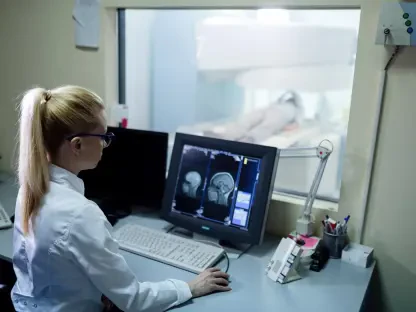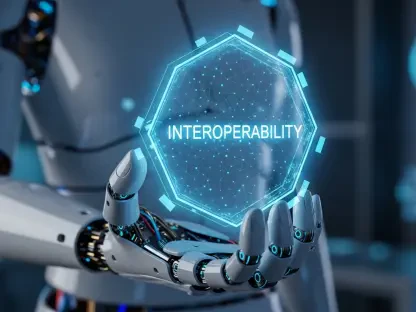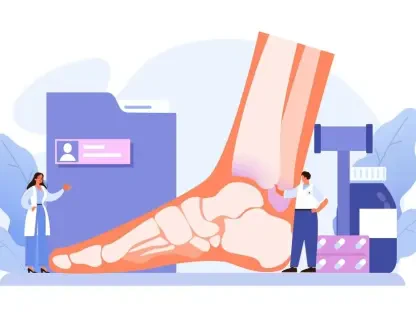The ongoing challenges faced by the U.S. Department of Health and Human Services (HHS) in mitigating cybersecurity risks within the healthcare sector have become increasingly dire. As technology continues to advance and interconnected devices become more integral in medical settings, the risk of cyberattacks also escalates. This is underscored by a report from the Government Accountability Office (GAO), which critiques HHS’s current measures and highlights the urgent need for more robust cybersecurity defenses.
Inadequate Tracking and Implementation of Ransomware Practices
HHS’s Failure in Tracking Industry Adoption
The GAO report zeros in on HHS’s failure to effectively track industry adoption of crucial ransomware-specific cyber practices. Despite hospitals reporting nearly 71% adherence to the National Institute of Standards and Technology Cybersecurity Framework practices, HHS has not been monitoring compliance with specific ransomware standards. This oversight reveals a significant gap in resource allocation and focus, potentially diverting attention from more pressing needs. The inability to evaluate the implementation of these ransomware-specific measures leaves healthcare facilities exposed to cyber threats that could compromise patient care and operational stability.
Furthermore, the report highlights the vulnerabilities that come with the growing prevalence of Internet of Things (IoT) and Operational Technology (OT) devices in healthcare settings. As these devices become more entrenched in everyday medical duties, their security becomes paramount. Yet, HHS’s lack of oversight and assessment in this area suggests a troubling inability to lead the industry in cybersecurity measures. IoT and OT devices, while beneficial, open additional attack vectors that can be exploited by malicious actors if not properly secured. The failure to track and secure these devices puts the entire healthcare infrastructure at risk.
Overarching Trend of Rising Cyberattacks
The GAO’s report presents a concerning trend in cyberattacks and data breaches within the healthcare sector, underscoring a growing need for stronger cybersecurity measures. Despite efforts to limit cyber risks, the current lack of fully implemented policies and adequate support tools such as guidance documents, training programs, and threat briefings leaves the sector vulnerable. This growing cyber threat landscape necessitates a proactive and comprehensive approach to cybersecurity, something HHS has not yet fully realized.
One of the most alarming findings is the department’s inadequacy in conducting industry-wide assessments of IoT and OT device risks. Without a clear understanding of the security needs and threats from these advancing technologies, HHS faces significant challenges in recommending or deploying effective security measures. This oversight jeopardizes the healthcare sector’s ability to protect sensitive patient data and maintain continuous care in the face of escalating cyber threats. The gap in HHS’s practices calls for an immediate reassessment and overhaul of its strategies to better align with current and emerging risks.
Conflict and Redundancy in Cybersecurity Standards
CMS and State Agencies: Managing Cyber Requirements
Another key area of concern noted in the GAO report is the conflict and redundancy in cybersecurity standards between different federal agencies. The Centers for Medicare & Medicaid Services (CMS) have established cyber requirements intended to protect data shared with state agencies. However, the existence of varied standards among agencies such as the Social Security Administration results in unnecessary synchronization burdens for state officials. This redundancy not only complicates compliance but potentially detracts focus from broader, more critical cybersecurity efforts. The need for cohesive, streamlined standards is evident if the sector is to effectively combat cyber threats without overextending its already limited resources.
The conflicting cyber standards create an unwelcome complexity for state agencies tasked with managing healthcare data. These agencies must navigate a labyrinth of differing requirements that can strain resources and lead to inefficiencies. For instance, state officials may have to spend an inordinate amount of time ensuring compliance with CMS and other federal agencies, diverting their efforts from critical cybersecurity initiatives. Closing these gaps would not only simplify compliance but enhance overall cyber resilience across the healthcare sector. Integrating these requirements into a cohesive framework is necessary for the healthcare industry to keep pace with the evolving cyber threat landscape.
GAO’s Findings and Recommendations for HHS
The U.S. Department of Health and Human Services (HHS) is grappling with significant challenges in managing cybersecurity risks in the healthcare sector, which have become increasingly critical. As technology advances and interconnected medical devices become more common, the threat of cyberattacks grows in tandem. This growing risk is highlighted by a report from the Government Accountability Office (GAO), which critiques the current measures implemented by HHS and emphasizes the urgent necessity for enhanced cybersecurity measures.
The report from the GAO outlines that HHS’s existing cybersecurity protocols are not adequate to handle the increased risks. The rise in cyber threats is not only due to the advancement in technology but also the integration of these innovations into everyday medical operations. In healthcare, where patient data and critical systems are highly sensitive, the stakes are particularly high. The GAO insists that more stringent defenses are imperative to safeguard against potential breaches that could compromise patient privacy and the functionality of medical devices. In this landscape, improving cybersecurity within the healthcare sector is more vital than ever.









